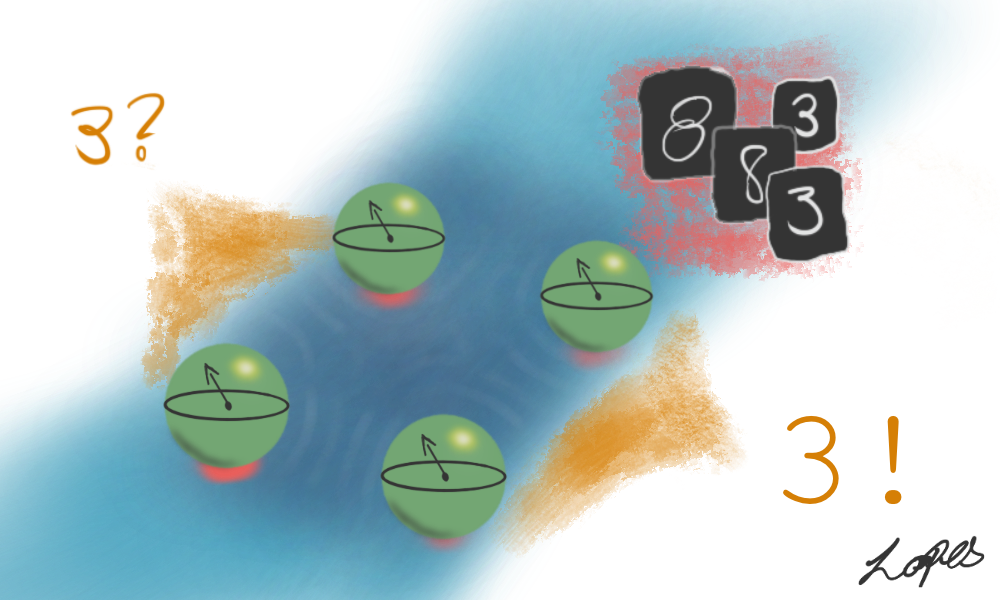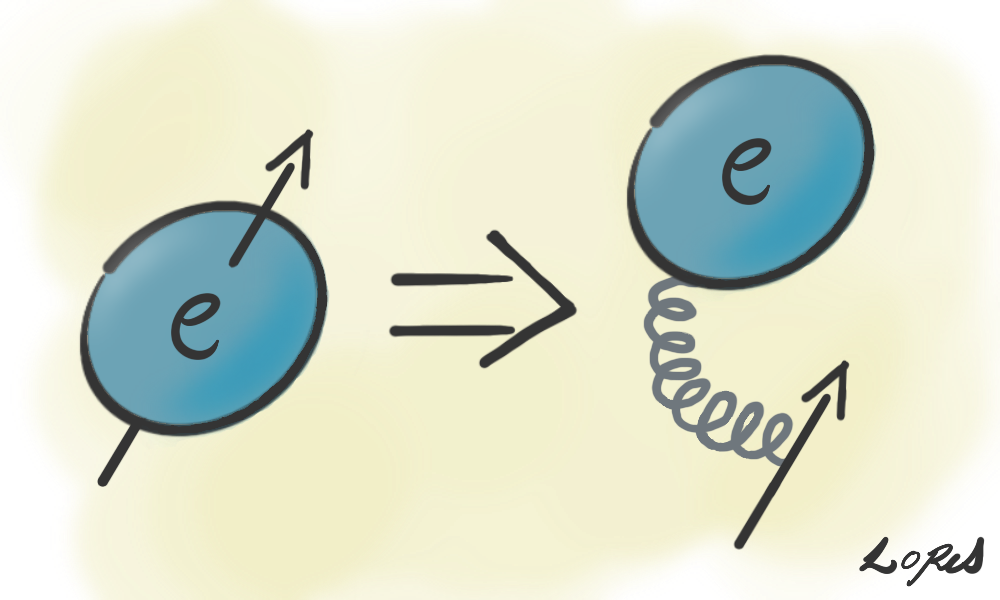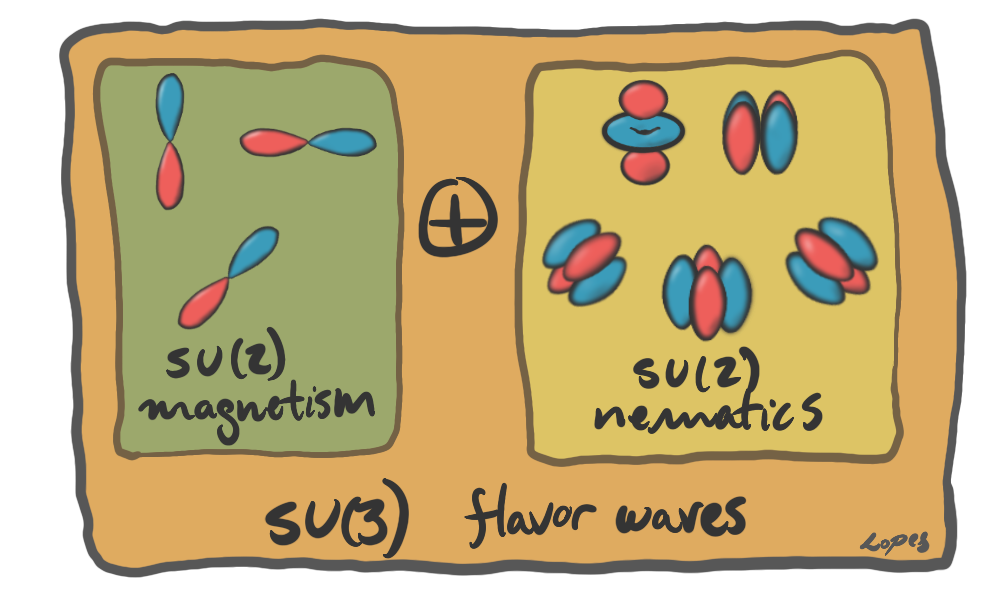The bulk of my scientific production revolves around three topics of quantum physics that I approach via quantum field theory, algebraic numerics, and experimental approaches.
Quantum Computing
Quantum computing refers to the controlled encoding and manipulation of information in assets that behave under the laws of quantum mechanics. Theoretically, this paradigm of computing provides a pathway to perform certain calculations impossible for regular computers. So far, however, these promises require quantum computing hardware beyond current-day technology. With the high costs to advance such hardware, establishing the feasibility of near-term applications is imperative to justify continued advances. My contribution to this field thus focuses on direct and concentrated experimentation with established quantum hardware, sacrificing deterministic advantages in favor of heuristic algorithms, and exploring directions in the major areas of quantum simulations, optimization, and machine learning.
Quasiparticle fractionalization
Through strong interactions, quantum matter can undergo quasiparticle fractionalization, effectively separating intrinsic degrees of freedom like the spin and charge of an electron. This phenomenon, often intertwined with topological effects, manifests in limited dimensions or in the presence of material defects such as boundaries, or atomic disclinations and dislocations. The resulting particles, known as anyons, exhibit properties that span a continuum between familiar fermions and bosons. This departure from nature’s conventional elementary particles not only serves as a fascinating deviation but also holds practical value for fault-tolerant quantum computation. Check out my research on qubit architectures with Fibonacci anyons in Kondo systems for more on that!
Symmetry emergence
In the realm of phase transitions, systems at low energies are expected to emmergently exhibit reduced symmetries, as when fluids freeze into crystalline structures. When topology is at play, the classification of certain phases with no difference in symmetries is also possible. A less explored possibility is the emergence of higher symmetries in systems at low energies. While this phenomenon is sporadically discussed in the literature on a case-by-case basis, my research delves into systematically analyzing mechanisms that broadly induce ‘symmetry emergence’ across physical systems. I design these mechanisms from the bottom-up via structures that combine degrees of freedom and restrict perturbations, or uncover them from the top-down scrutinizing cases of unexpected symmetry emergence.
Publications:
Large-scale quantum reservoir learning with an analog quantum computer
M. Kornjaca, ..., PLSL, ..., S. Wang
arXivLong-lived oscillations of false and true vacuum states in neutral atom systems
S. Darbha, M. Kornjaca, F. Liu, J. Balewski, M. Hirsbrunner, PLSL, S. Wang, R. Beeumen, D. Camps, K. Klymko
arXivFalse vacuum decay and nucleation dynamics in neutral atom systems
S. Darbha, M. Kornjaca, F. Liu, J. Balewski, M. Hirsbrunner, PLSL, S. Wang, R. Beeumen, D. Camps, K. Klymko
arXivEngineering quantum states with neutral atoms
J. Balewski, M. Kornjaca, K. Klymko, S. Darbha, M. Hirsbrunner, PLSL , F. Liu, D. Camps
arXivG2 integrable point characterization via isotropic spin-3 chains
C. Li, V. L. Quito, D. Schuricht, and PLSL
arXiv PRBIndustry applications of neutral-atom quantum computing solving independent set problems
J. Wurtz, PLSL, C. Gorgulla, N. Gemelke, A. Keesling, and S. Wang
arXivThe case of SU(3) criticality in spin-2 chains
C. Li, V. L. Quito, E. Miranda, R., I. Affleck, and PLSL
arXiv PRBMulti-impurity chiral Kondo model: Correlation functions and anyon fusion rules
D. Gabay, C. Han, PLSL, I. Affleck, and E. Sela
arXiv PRBTopological Josephson Bifurcation Amplifier: Semiclassical theory
S. Boutin, PLSL, A. Mu, U. C. Mendes, I. Garate
arXiv J. Appl. Phys.Educational Resources for Promoting Talent in Quantum Computing
P. Pashaei, H. Amiri, R. Haenel,PLSL, and L .Chrostowski
IEEE QCEElectromagnetic response of superconductors in the presence of multiple collective modes
R. Boyack and PLSL
arXiv PRBEmergent SU(N) symmetry in disordered SO(N) spin chains
V. L. Quito, PLSL, J. A. Hoyos, and E. Miranda
arXiv Eur. Phys. J.Effect of Zeeman coupling on the Majorana vortex modes in iron-based topological superconductors
A. Ghazaryan, PLSL, P. Hosur, M. J. Gilbert, and P. Ghaemi
arXiv PRB Rapid Comm.Highly-symmetric random one-dimensional spin models
V. L. Quito, PLSL, J. A. Hoyos, and E. Miranda
arXiv PRBA non-Abelian twist to integer quantum Hall states
PLSL, V. L. Quito, B. Han, and J. C. Y. Teo
arXiv PRBInfluence of Landau levels on the phonon dispersion of Weyl semimetals
P. Rinkel, PLSL, and I. Garate
arXiv PRBMicrowave signatures of ℤ2 and ℤ4 fractional Josephson effects
PLSL, S. Boutin, P. Karan, U. C. Mendes, and I. Garate
arXiv PRBTopological strings linking with quasiparticle exchange in superconducting Dirac semimetals
PLSL, J. C. Y. Teo, and S. Ryu
arXiv PRBCompeting adiabatic Thouless pumps in enlarged parameter spaces
PLSL, P. Ghaemi, S. Ryu, and T. L. Hughes
arXiv PRBHolographic Entanglement Renormalization of Topological Insulators
X. Wen, G. Y. Cho, PLSL, Y. Gu, X.-L. Qi, and S. Ryu
arXiv PRBEffective action and electromagnetic response of topological superconductors and Majorana-mass Weyl fermions
M. Stone and PLSL
arXiv PRBMagnification of signatures of topological phase transition by quantum zero point motion
PLSL and A. Ghaemi
arXiv PRBEffective response theory for zero energy Majorana bound states in three spatial dimensions
PLSL, J. C. Y. Teo, and S. Ryu
arXiv PRBMajorana Fermions Signatures in Macroscopic Quantum Tunneling
PLSL, V. Shivamoggi, A. O. Caldeira
arXiv

